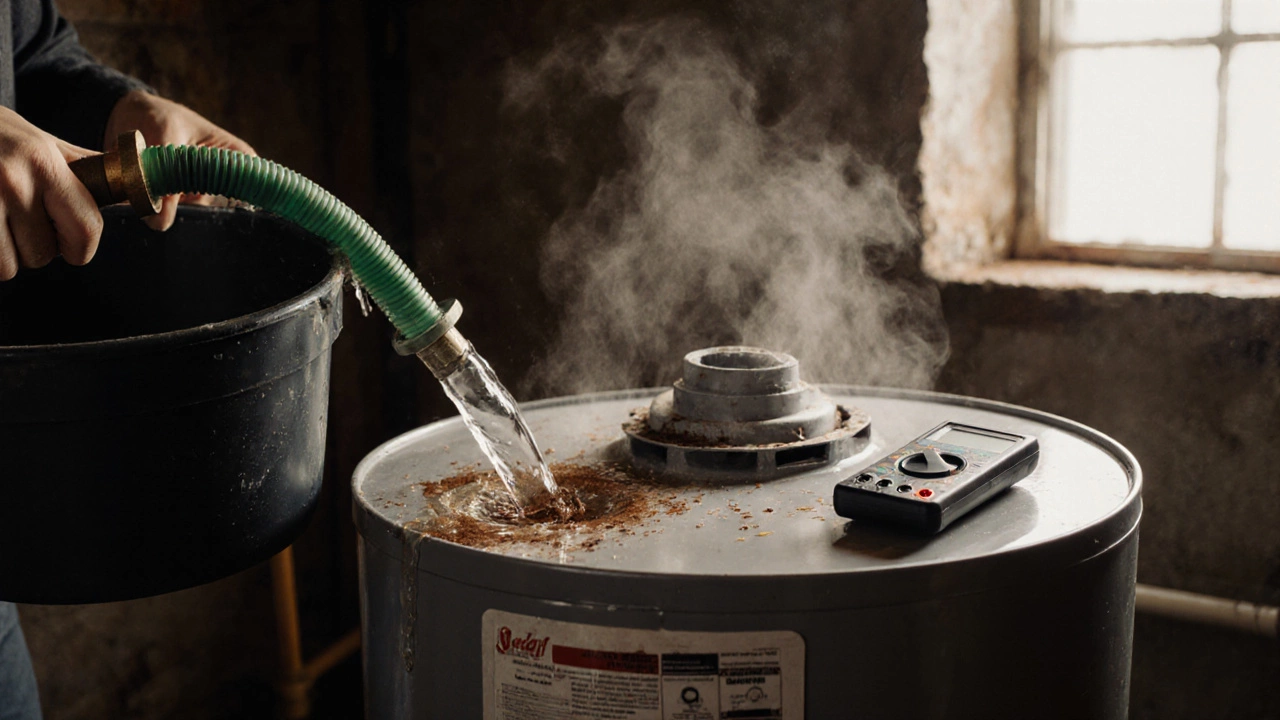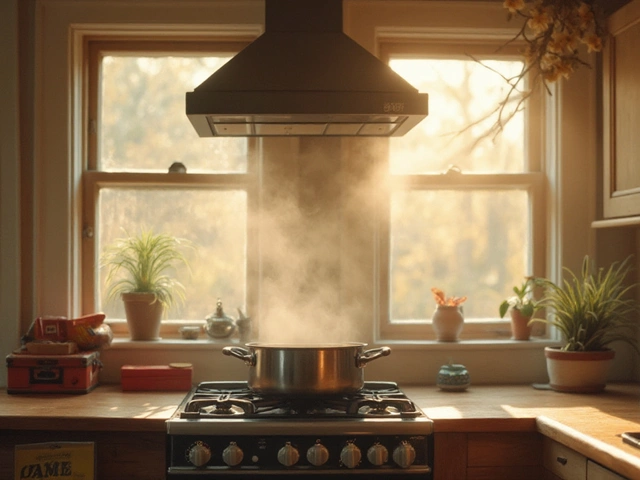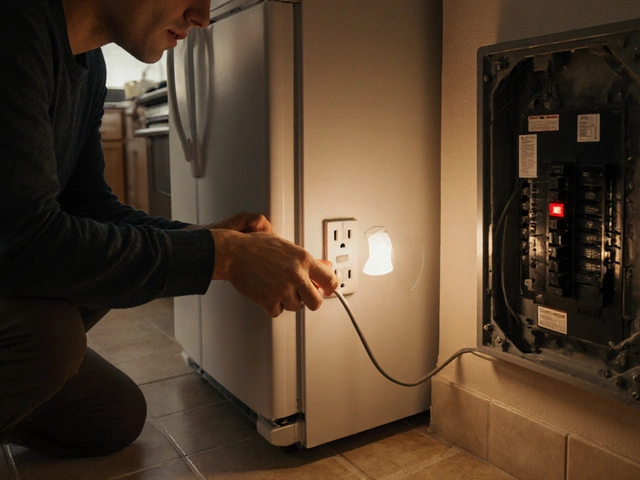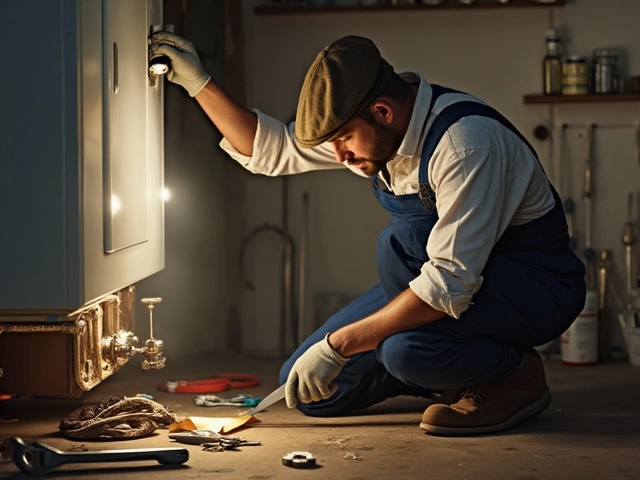If you turn on the tap and nothing but cold water comes out, your water heater isn’t kicking on-and that’s not just inconvenient, it’s a full-blown household crisis. No showers, no dishes, no laundry. You’ve checked the thermostat, flipped the breaker, and still nothing. Before you call a plumber or start shopping for a new unit, let’s walk through the most common reasons why your hot water heater won’t turn on-and how to fix them yourself.
1. The Power Is Off (Electric Water Heaters)
Electric water heaters rely on a steady flow of electricity. If the power’s cut, the heating elements won’t activate. Start by checking your home’s electrical panel. Look for a 240-volt double-pole breaker labeled something like "Water Heater," "WH," or "EWH." If it’s tripped (meaning the switch is in the middle or off position), turn it all the way off, then back on. You should hear a click. If it trips again right away, there’s a short circuit or a bad heating element. Don’t keep resetting it-this could damage your system further.
Some electric water heaters also have a high-limit switch, usually red and located near the thermostat. If it’s popped out, press it firmly to reset. This switch trips when the water gets too hot, often due to a faulty thermostat. If resetting it fixes the issue temporarily, the thermostat is likely failing and needs replacement.
2. The Thermostat Is Broken or Set Too Low
Thermostats control when the heater turns on and off. If it’s set below 120°F, you might not notice hot water right away, especially if you’re using a lot of it. But if it’s set correctly and still no heat, the thermostat could be dead.
For dual-element electric heaters, there are two thermostats-one upper, one lower. The upper one controls the lower. If the upper thermostat fails, the lower one never gets the signal to turn on. Test both with a multimeter. Set it to ohms (Ω). Disconnect power, remove the thermostat cover, and touch the probes to the terminals. If you get no reading or infinite resistance, the thermostat is dead. Replace both at the same time-they age together.
Gas water heaters have a different issue: the thermocouple. It’s a safety device that ensures the pilot light is lit before gas flows. If it’s dirty, bent, or worn out, the gas valve won’t open. Clean it with fine sandpaper or replace it. It’s a $15 part and takes 15 minutes.
3. The Pilot Light Went Out (Gas Water Heaters)
If you’ve got a gas water heater and no hot water, the pilot light might be out. Check the access panel at the bottom. You should see a small blue flame. If it’s gone, you’ll need to relight it. Follow the instructions on the tank-usually, you turn the gas knob to "Pilot," hold it down, press the igniter button (or use a long lighter), and keep holding for 30 seconds after the flame catches. Then turn the knob to "On."
If the pilot won’t stay lit, the thermocouple is likely the culprit. It’s a thin metal tube next to the pilot flame. If it’s not getting hot enough, it won’t send the signal to keep the gas valve open. Replace it. If the pilot still won’t stay lit after replacing the thermocouple, your gas control valve might be failing. That’s a job for a pro.
4. Sediment Buildup Is Smothering the Heater
Over time, minerals in your water settle at the bottom of the tank. This sludge acts like insulation, trapping heat and preventing the heating elements from warming the water efficiently. In electric heaters, this can cause the lower element to burn out. In gas heaters, it can overheat the tank and trigger safety shutoffs.
Draining your tank once a year prevents this. Turn off the power or gas, shut the cold water inlet, attach a garden hose to the drain valve at the bottom, and open the valve. Let it run until the water comes out clear. You might get a few gallons of gritty, rusty water-this is normal. Once it’s clear, close the valve, turn the water back on, and restore power or gas. This simple step can revive a heater that’s been acting up for months.

5. The Heating Element Is Burned Out (Electric Only)
Electric water heaters have one or two heating elements. The lower one usually fails first because it’s buried in sediment. If the upper element works but the lower one doesn’t, you’ll get a few gallons of hot water before it runs out.
To test: Turn off power. Drain a few gallons to reduce pressure. Remove the access panels and insulation. Use a multimeter to check resistance across the element terminals. A good element reads between 10 and 16 ohms. If it reads zero or infinity, it’s dead. Replace it with the same wattage and voltage. Always replace both elements at once-even if one tests fine, the other is close to failing.
Pro tip: When reinstalling, apply plumber’s tape to the threads and hand-tighten. Over-tightening cracks the element. And don’t turn the power back on until the tank is completely full. Running the element dry will destroy it in seconds.
6. The Gas Valve or Control Module Is Faulty
Gas water heaters depend on a control module to manage gas flow, ignition, and safety. If the module is failing, the heater won’t turn on-even if the pilot light is lit. Signs include no clicking sound when you turn the dial to "On," or the gas valve not opening after the pilot is lit.
These modules are not user-serviceable. If you’ve ruled out the thermocouple, pilot light, and gas supply, the control valve is likely the issue. Replacement costs $150-$300, plus labor. If your heater is over 10 years old, it’s often cheaper to replace the whole unit than to repair this part.
7. No Gas Supply or Low Pressure
Before you assume the heater is broken, make sure gas is actually reaching it. Check other gas appliances-your stove, furnace, or fireplace. If none of them work, the problem is your gas line or meter. Call your gas company immediately. Don’t try to fix it yourself.
If only the water heater is affected, check the shutoff valve near the unit. It should be fully open. Some older models have a manual gas valve with a lever-make sure it’s aligned with the pipe. If the valve is open and the pilot won’t light, there could be air in the line. Bleed it by turning the gas valve off for five minutes, then back on slowly. Wait a few minutes and try relighting.

What to Do If None of This Works
If you’ve checked the breaker, reset the thermostat, relit the pilot, drained the tank, tested the elements, and confirmed gas flow-and still no hot water-it’s time to call a licensed plumber. There could be a deeper issue: a cracked tank, a failed pressure relief valve, or internal corrosion.
Also consider age. Most water heaters last 8-12 years. If yours is over 10, and you’re spending money on repairs, it’s probably not worth it. A new, energy-efficient model will save you more on your utility bills than the cost of one repair.
Quick Checklist: Does Your Water Heater Kick On?
- ✅ Is the circuit breaker on? (Electric)
- ✅ Is the pilot light lit? (Gas)
- ✅ Is the thermostat set above 120°F?
- ✅ Did you reset the high-limit switch?
- ✅ Is the gas shutoff valve open? (Gas)
- ✅ Did you drain sediment from the tank in the last year?
- ✅ Do the heating elements show resistance with a multimeter? (Electric)
- ✅ Is the thermocouple clean and properly positioned? (Gas)
If you answered "no" to any of these, fix that first. Most water heater failures are simple fixes-if you catch them early.
Frequently Asked Questions
Why is my electric water heater making a popping sound?
Popping or crackling sounds usually mean sediment has built up at the bottom of the tank. When the heating element turns on, it heats the water trapped under the sludge, causing it to boil and make noise. Drain and flush the tank to fix it. If the noise continues after cleaning, the element might be damaged from overheating and needs replacement.
Can a water heater explode if it won’t turn on?
No, a water heater won’t explode just because it won’t turn on. Explosions happen when pressure builds up due to a failed pressure relief valve and the thermostat keeps heating past safe limits. If your heater isn’t turning on at all, pressure isn’t building-it’s the opposite. But if your heater is old, corroded, or has been repeatedly overheating, have it inspected. Safety valves are critical.
How do I know if my water heater is electric or gas?
Look at the bottom of the tank. If you see a metal pipe running to a gas line and a small window with a blue flame, it’s gas. If you see a power cord plugged into an outlet and no gas pipe, it’s electric. Gas models also have a vent pipe on top; electric ones don’t.
Should I turn off my water heater if it’s not working?
Yes. Turn off the power at the breaker for electric heaters. For gas, turn the control knob to "Off." This prevents accidental activation, overheating, or electrical shorts while you troubleshoot. It’s also safer if you plan to drain or replace parts.
How often should I flush my water heater?
Once a year is ideal. If you have hard water, do it every six months. Sediment buildup reduces efficiency, increases energy bills, and shortens the life of your heater. Flushing takes under an hour and costs nothing but your time.







